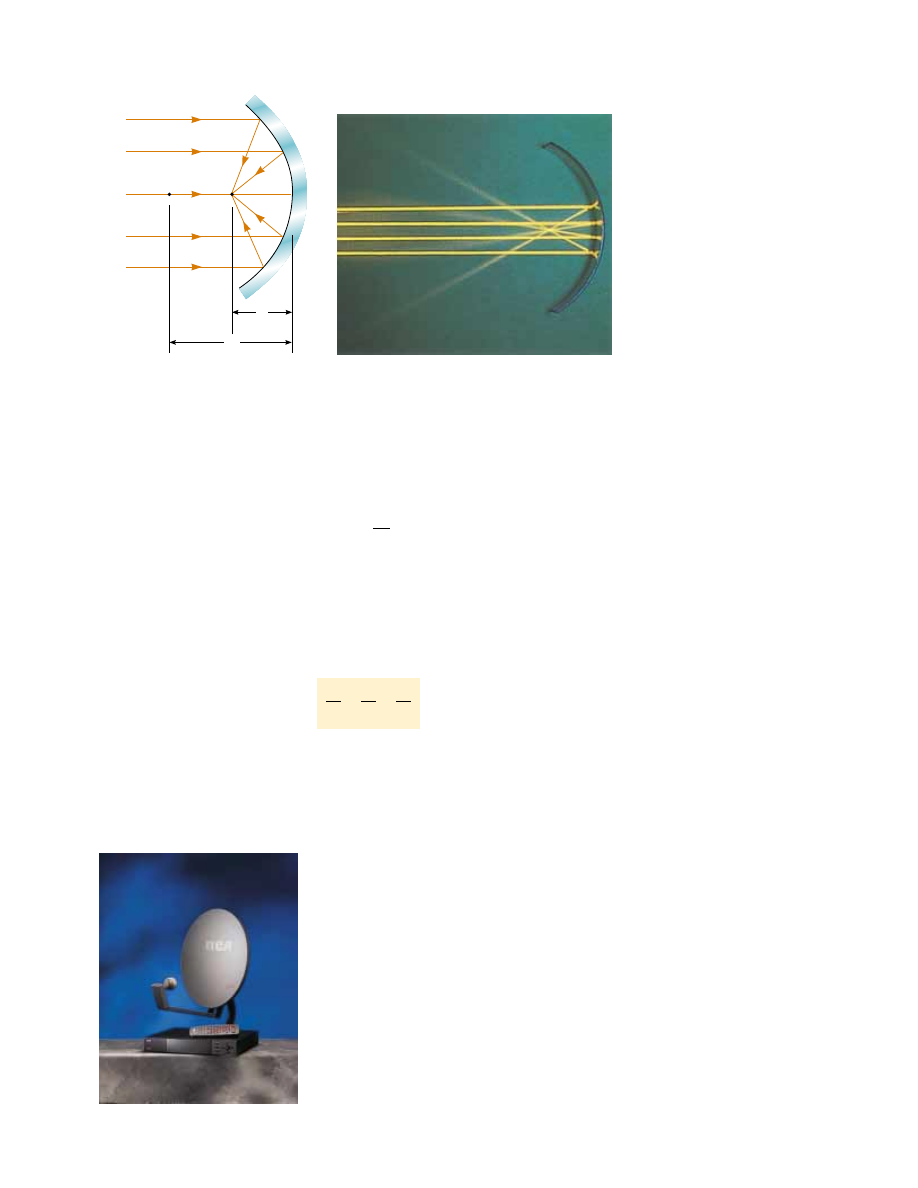Physics For Scientists And Engineers 6E - part 284

in this figure because the source is assumed to be very far from the mirror. We call
the image point in this special case the
focal point F and the image distance the
focal length f, where
(36.5)
In Figure 36.8, the colored beams are traveling parallel to the principal axis and the
mirror reflects all three beams to the focal point. Notice that the point at which the
three beams intersect and the colors add is white.
Focal length is a parameter particular to a given mirror and therefore can be used
to compare one mirror with another. The mirror equation can be expressed in terms
of the focal length:
(36.6)
Notice that the focal length of a mirror depends only on the curvature of the mirror
and not on the material from which the mirror is made. This is because the formation
of the image results from rays reflected from the surface of the material. The situation
is different for lenses; in that case the light actually passes through the material and
the focal length depends on the type of material from which the lens is made.
1
p
&
1
q
"
1
f
f "
R
2
S E C T I O N 3 6 . 2 • Images Formed by Spherical Mirrors
1133
C
F
R
f
(a)
Henry Leap and Jim Lehman
Figure 36.12 (a) Light rays from a distant object (p : ') reflect from a concave
mirror through the focal point F. In this case, the image distance q
# R/2 " f, where
f is the focal length of the mirror. (b) Reflection of parallel rays from a concave mirror.
▲
PITFALL PREVENTION
36.2 The Focal Point Is
Not the Focus Point
The focal point is usually not the
point at which the light rays focus
to form an image. The focal
point is determined solely by the
curvature of the mirror—it does
not depend on the location of
the object at all. In general, an
image forms at a point different
from the focal point of a mirror
(or a lens). The only exception is
when the object is located infi-
nitely far away from the mirror.
A satellite-dish antenna is a concave reflector for televi-
sion signals from a satellite in orbit around the Earth. The
signals are carried by microwaves that, because the
satellite is so far away, are parallel when they arrive at the
dish. These waves reflect from the dish and are focused
on the receiver at the focal point of the dish.
Focal length
Mirror equation in terms of focal
length
Courtesy of Thomson Consumer Electronics
(b)